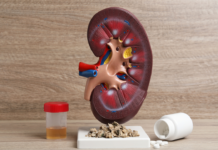Written by Guest Blogger: Jenny Hart
This article is not intended to diagnose or treat any illness or condition. The views expressed here are those of the author and not necessarily those of The Hope or Kibow Biotech®.
Diabetes affects the body’s ability to turn glucose (a sugar found in food) into energy that your cells can actually use. In the United States alone, 30.4 million people[1]have diabetes. Another 84.1 million have prediabetes, a condition that often leads to diabetes within 5 years if it goes untreated.
You probably know that people with diabetes need to take insulin, and monitor their sugar intake. But you may not be as familiar with the other effects[2] that diabetes can have on the body. Diabetes can cause damage to the cardiovascular system, the eyes, the kidneys, the feet, and more. That means that regular testing is important to help maintain your health and prevent other complications from developing or worsening. These three blood tests are an important part of that preventative care.
1. Hemoglobin A1c blood test
One important test is the hemoglobin A1c test. You may also hear this called the “glycosylated hemoglobin test”. This blood test is used to diagnose diabetes. But it’s also used for people who already have diabetes, to monitor how well they’re managing their condition. While this test does involve blood sugar, it’s not the same as the daily blood glucose monitoring that people with diabetes perform every day.
What is it?
Rather than a snapshot of your current glucose level, the A1c test shows you what your average level was over the past 3 months. The test looks at hemoglobin, a protein in red blood cells that carries oxygen. By examining what percentage of your hemoglobin is coated with sugar, it can provide a longer-term idea of your blood sugar levels.
The results of an A1c test fall into several categories:
- Less than 5.7 percent – Normal blood sugar
- 5.7-6.4 percent – Pre-diabetes (risk of developing diabetes)
- 6.5-7 percent – Diabetes range, but with relatively healthy blood sugar
- Over 7 percent – Diabetes range, with risk of complications
Why does it matter?
The A1c test gives you a more holistic view of what your blood sugar is doing. Managing blood sugar is an enormous part of managing complications from diabetes, and your short-term blood sugar level is only part of the picture.
Some short-term complications of blood sugar issues include:
- Diabetic ketoacidosis – This is caused by not having enough insulin (and therefore too much sugar) in the bloodstream. This leads to a buildup of acids called ketones. In can cause abdominal pain, increased urination, confusion, and fruity smelling breath.
- Hypoglycemia – This condition is also called low blood sugar, but it’s caused by having too much insulin in the bloodstream. Hypoglycemia can cause unconsciousness, and even diabetic coma in some cases.
Some long-term complications of blood sugar issues include:
- Diabetic neuropathy – This is a big name, but it just means “nerve damage caused by diabetes.” This is caused by high blood sugar levels over time. It can injure nerves all throughout the body, but most often damages the legs and feet.
- Diabetic retinopathy – This means “eye damage caused by diabetes.” Over time, high blood sugar can damage the blood vessels in the back of the eyes. This can increase the risk of glaucoma, as well as cause floaters, blurred vision, and even vision loss.
- Kidney disease, including End Stage Renal Disease (ESRD). Just like high blood sugar damages blood vessels in the eyes, it can also damage blood vessels in the kidneys. Over time, this can damage the kidneys. Kidney disease is a chronic condition, and eventually requires dialysis treatments to replace kidney function once it reaches ESRD.
Estimated Glomerular Filtration Rate (eGFR)
Estimated glomerular filtration rate (eGFR) is an intimidating jumble of a name. But it’s simply a test that measures how well the filters in your kidneys are working. This test indicates whether you are at risk of kidney disease. Or, if you have kidney disease, what stage it’s in.
What is It?
The eGFR test measures your kidney efficiency[3] by testing how much creatinine is in your blood. Creatinine is a waste product that your body produces as it builds muscle. The kidneys’ job is to remove waste from your blood. Since we know roughly how fast the human body makes and removes creatinine, we can use the amount of it in the blood to estimate how well the kidneys are working.
There’s a more involved test that measures creatinine in the blood AND the urine to be extra sure, but this test is very involved. Most of the time, doctors will just use eGFR.
- 90 or higher – Healthy kidneys. (Or, if kidneys are damaged, Stage 1 of kidney disease.)
- 89-60 – Stage 2, mild loss of kidney function.
- 30-59 – Stage 3, ranging from mild to severe loss of kidney function.
- 29-15 – Stage 4, severe loss of kidney function.
- 15 or less – Stage 5, end stage renal disease.
Why does it matter?
According to estimates from the Centers for Disease Control, 1 in 3 people with diabetes[4] also has chronic kidney disease. Kidney disease can’t be cured; it can only be managed, and that means juggling the dietary and medication requirements for two different chronic diseases at once. Starting treatment early is incredibly important in slowing the progression of the disease. Unfortunately, the early stages don’t really present symptoms. People don’t usually know they have kidney disease until it reaches the later stages, or full-on ESRD.
Diabetes is a huge risk factor for kidney disease (and vice versa). Between the risk and the difficulty in detection, regular testing is crucial.
Lipid Panel / Lipid Profile
Lipids are a type of fats. They store energy, and they’re also important for cell structure and proper cell functioning. You get them when you eat fats, carbohydrates, and certain vitamins. A lipid panel measures these fats, including cholesterol.
What does it do?
A lipid panel (also known as a lipid profile) tests the blood for the levels of various fats, including high-density lipoproteins (HDL) and low-density lipoproteins (LDL). You may have heard HDL and LDL called “good cholesterol,” and “bad cholesterol,” respectively. The truth is a little more complicated than just good and bad, but that’s a good enough place to start understanding them. The important thing is that your levels of these lipids (and others) stay in the ranges they’re supposed to. People with diabetes are more likely to have abnormalities in this area.
Why does it matter?
Cardiovascular health is important for everyone, but it’s especially important when you have diabetes. Coronary artery disease is a big factor[5] in the long-term prognosis for people who have diabetes. And having good blood flow is also important to the other complications we mentioned. Smaller blood vessels in the feet, kidneys, eyes, and more need a good flow of blood to reduce the risk of damage. Cholesterol and other lipids are a big part of that. On top of that, people with diabetes are more susceptible to a condition called hyperlipidemia, where a person has abnormally high concentrations of lipids.
Even if you’re good about managing your glucose, it’s important to get a lipid screening every year. Good blood sugar management can lower your lipid profile, but there are some lipid abnormalities that you can’t fix all on your own.
Get tested and stay healthy!
When you live with diabetes, there are a few things you have to stay on top of that others don’t. That can feel like a lot sometimes, but it doesn’t have to stop you from living a rich, fulfilling life.
Hopefully, your care team is already on top of this blood work. But it’s too important to assume. You don’t have to wait until your annual check-up to ask your doctor about your A1c, eGFR, and lipid panel results. It’s important to know what side effects or symptoms are associated with each of these three areas, and to let your doctor know if you have any concerns.
Sponsor: Kibow Biotech® 
About The Author: Jenny Hart

References:
- New CDC report: More than 100 million Americans have diabetes or prediabetes. (2017, July 18). Retrieved from https://www.cdc.gov/media/releases/2017/p0718-diabetes-report.html.
- Diabetes. (2018, August 8). Retrieved from https://www.mayoclinic.org/diseases-conditions/diabetes/symptoms-causes/syc-20371444.
- Use Our GFR Calculator. (n.d.). Retrieved from https://www.freseniuskidneycare.com/about-chronic-kidney-disease/understanding-ckd/gfr-calculator.
- Chronic Kidney Disease in the United States, 2019. (2019, March 11). Retrieved from https://www.cdc.gov/kidneydisease/publications-resources/2019-national-facts.html.
- Aronson, D., & Edelman, E. R. (2014, August). Coronary artery disease and diabetes mellitus. Retrieved from https://www.ncbi.nlm.nih.gov/pmc/articles/PMC4672945/.




